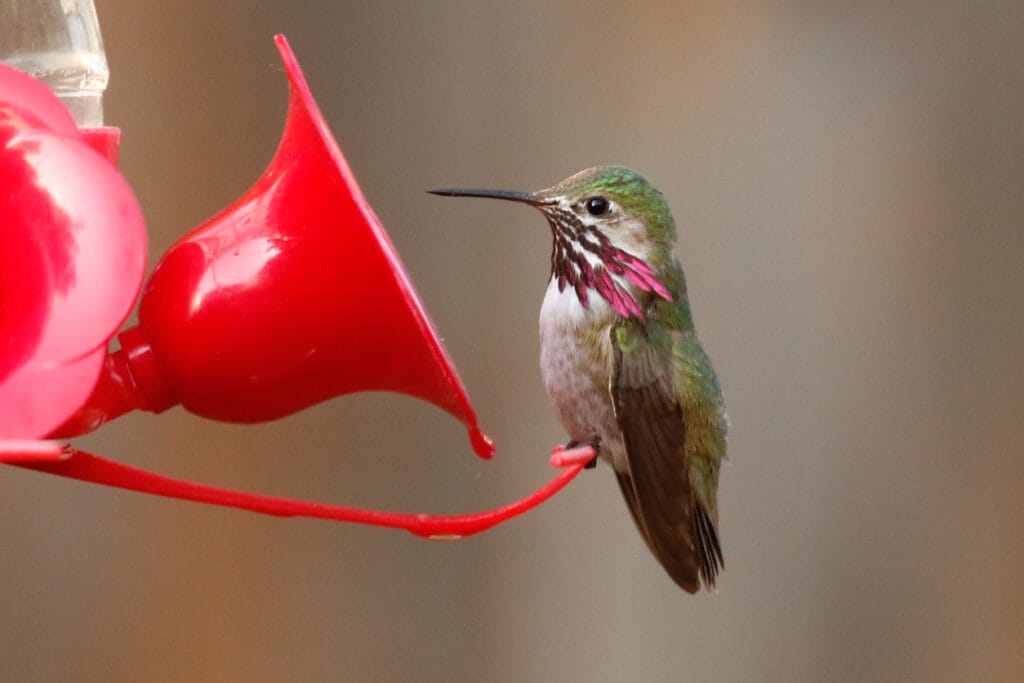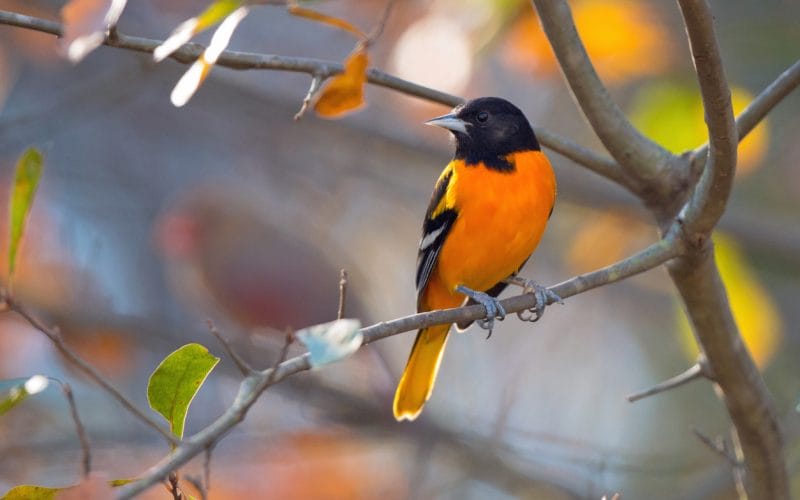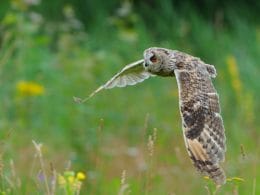Located in the Southeast region of the United States, Alabama has a moderate climate. It has hot, humid summers and mild winters. However, the weather gets colder in the more mountainous parts of the state.
Alabama’s location and climate make it a hotbed for diverse wildlife, including hummingbirds
Hummingbirds are incredibly interesting creatures for wildlife enthusiasts. They are fascinating birds with plenty of intrigue, coming in an ultra-small package. We are here to guide you through the identification, migration patterns, and interesting facts about the species of hummingbirds in Alabama.
10 Types of Hummingbirds in Alabama
Species of hummingbirds in a certain area/region can be classified as resident or rare. The Ruby-throated Hummingbird is the only species resident in Alabama.
The Rufous Hummingbird is also a fairly frequent visitor of the state.
Resident Hummingbird Species
Let’s get into it! Here are some interesting facts about the two species of hummingbirds you’re most likely to see in Alabama.
1. Ruby-Throated Hummingbird

- Scientific name: Archilochus colubris
- Length: 2.8-3.5 inches
- Weight: 0.1-0.2 oz
- Wingspan: 3.1-4.3 inches
If you spot a hummingbird in Alabama, chances are that it’ll be a Ruby-throated Hummingbird. This species is the state’s most frequent visitor, appearing in almost 20% of bird watcher checklists submitted in the state.
These birds breed in Alabama (the breeding season is from March till November), and then the vast majority of them migrate further south for the winter. Not all of them migrate though, some Ruby-throated hummingbirds inhabit Alabama year-round.
Author Note: The most striking features of these birds are the flamboyant ruby hue of their throats and their bright green backs. However, these are only features of males. Females have plain white throats and can be identified from their black, white, and green tail feathers. The males’ tails are forked.
These birds feed on nectar and small insects, catching them from spiderwebs mid-flight. Their legs are so tiny that they don’t have the ability to walk. When moving along their perch they can only shuffle.
Make sure to have colorful flowering plants and nectar feeders in your backyard if you want these tiny colorful birds to pay you a visit. Ruby-throated hummingbirds are attracted to orange and red plants the most.
2. Rufous Hummingbird

- Scientific name: Selasphorus rufus
- Length: 2.8-3.5 inches
- Weight: 0.1-0.2 oz
- Wingspan: 4.3 inches
Rufous Hummingbirds are the second most common species in Alabama, and they are likely to be seen in the state during the winter months (from November to March).
Females have white, speckled throats and white-tipped feathers. Both males and females have green backs. The main distinguishing feature of males is their iridescent orange throats.
These birds have a highly aggressive and territorial temperament. They will often confront and scare away other hummingbirds that try to join them in their feeding grounds. They’ve also been seen to chase away other wildlife such as rodents.
You are most likely to spot Rufous Hummingbirds in the woods and forests of Alabama. They feed on small insects such as gnats and flies, as well as the nectar from tubular flowers.
If you wish to attract these birds to your garden, you should install nectar feeders and plant nectar-rich flowers.
A word of caution though, make sure to have several nectar feeders and plenty of flowers to avoid the potential issues that may be caused by these birds’ territorial tendencies.
Rare Hummingbird Species
These are the species that are seldom seen in Alabama. If you see one, it is most likely a bird that has gotten lost during migration.
3. Black-Chinned Hummingbird

- Scientific name: Archilochus alexandri
- Length: 3.5 inches
- Weight: 0.1-0.2 oz
- Wingspan: 4.3 inches
Black-chinned Hummingbirds are highly unlikely to be sighted in Alabama. However, if you happen to be at the right place at the right time you might spot one during the winter months.
Top Tip: If you’re trying to differentiate between male and female Black-chinned Hummingbirds, the first thing you should look at is their throats. The males’ throats are much more colorful than females’, they are a sparkling combination of black and purple.
On the other hand, females’ throats are pale and speckled. The backs of both males and females are green.
In terms of their habitat, Black-chinned Hummingbirds prefer to settle on small branches of dead trees near rivers and canyons. These birds’ tongues are lightning quick, having the ability to lick almost 20 times per second when they are feeding on nectar. They will also eat small insects and spiders.
4. Calliope Hummingbird

- Scientific name: Selasphorus calliope
- Length: 3.1-3.5 inches
- Weight: 0.1 oz
- Wingspan: 4.1-4.3 inches
Although there have been some recorded sightings of Calliope Hummingbirds in Alabama, any presence of this species in the state is likely accidental. Your best bet of seeing one of these birds in the state is to be in Baldwin, or nearby.
Top Tip: Male Calliope hummingbirds are diversely colored, with shiny purple throats and green backs. They have dark tails and a white chest and belly area.
Females’ chests and bellies are also white, but with a touch of pink. They also lack the colorful throats of males, their throats being whitish with brown specks
The Calliope Hummingbird is the smallest breeding bird in the continent, but don’t let their size fool you, these birds have plenty of fight in them. Their migration is a 5000-mile odyssey, and they are incredibly territorial.
Despite measuring only three inches and weighing in at a tenth of an ounce, they have been seen fending off hawks from their favorite feeding spots.
5. Rivoli’s Hummingbird

- Scientific name: Eugenes Fulgens
- Length: 4.3-5.5 inches
- Weight: 0.3 oz
- Wingspan: 7.1 inches
Rivoli’s Hummingbirds are an incredibly rare sight in Alabama. When they have been sighted, it has been in the vicinity of Monroeville. The last time one of these birds was seen in Alabama was in 1996.
Rivoli’s Hummingbirds are relatively large, they’re also more colorful than most hummingbird species.
The tops of males’ heads are a sparkling purple, and their throats are bright green. The general color of males’ bodies is dark green, while females have green backs and gray undersides. Females also lack the head and throat colorations of males.
6. Allen’s Hummingbird

- Scientific name: Selasphorus sasin
- Length: 3.5 inches
- Weight: 0.1-0.14 oz
- Wingspan: 4.3 inches
Another rare species in Alabama is Allen’s Hummingbird. It has only been sighted twice in the state in the past 10 years, both sightings have been around Baldwin.
To an inexperienced observer, the male Allen’s Hummingbird is almost identical to the male Rufous Hummingbird due to its shiny orange/red throats and green back.
Author Note: The primary distinction between the two species is the tone of the green coloration on their backs, which is slightly different in both birds. You can also tell the difference between the two species by observing their tails and gauging the narrowness of the feathers
Female Allen’s Hummingbirds have whitish throats, long straight bills, and green backs. Males have similar bills as well as orange undersides and tails.
7. Green Violetear Hummingbird

- Scientific name: Colibri thalassinus
- Length: 3.8-4.7 inches
- Weight: 0.17-0.2 oz
- Wingspan: 4.7 inches
With only one recorded sighting ever in Alabama (way back in 1995), the Green Violetear Hummingbird (also known as the Mexican Violetear Hummingbird) is arguably the rarest species in the state.
These birds are native to Mexico and Nicaragua and can be found as far south as Bolivia. However, some of them may wander further north. If you’re lucky enough to see one of these vibrantly colored birds in the United States, it has probably gotten lost during migration.
Male and female Violetear Hummingbirds are almost mirror images of each other. The only differences between them lie in their size and the brightness of their colors. Male Violetear Hummingbirds are slightly brighter and larger.
These birds are grass-green and have a large violet spot on their chests, and a violet streak across their chins that connects to their ‘ears’, which are the same color.
8. Buff-Bellied Hummingbird

- Scientific name: Amazilia yucatanensis
- Length: 3.9-4.3 inches
- Weight: 0.1-0.18 oz
- Wingspan: 5.75 inches
Buff-bellied Hummingbirds are regarded as an accidental species in Alabama. However, the last recorded sighting was quite recent as one of these birds was sighted this year in Foley.
Males have gold-tinted green throats and straight, slim bills with dark tips. Their lower chest varies in color from bird to bird, but is often brown with a hint of yellow. This color is referred to as ‘buffy’, hence these birds’ moniker.
Females highly resemble males, but are generally less colorful and have darker bill tips.
9. Broad-Tailed Hummingbird

- Scientific name: Selasphorus platycercus
- Length: 3.1-3.5 inches
- Weight: 0.1-0.2 oz
- Wingspan: 5.25 inches
Seeing a Broad-tailed Hummingbird in Alabama is highly unlikely. However, there was one sighted as recently as 2021 in Beaver Dam Road.
These birds breed in areas with high elevations (between 5000 and 10000 feet). These birds are most likely to be found in California, Wyoming, Idaho, and Montana. These are the states that offer the right conditions for breeding. For winter, Broad-tailed Hummingbirds migrate to Southen Mexico.
The colorations of males and females are highly similar, with the exception of their throats. Males have bright pink throats, while females’ and juveniles’ throats (as well as their cheeks) are green spotted.
However, both male and female Broad-tailed Hummingbirds have shimmering green backs, white chests and bellies, and brownish wings.
To deal with the extremely low temperatures at high altitudes, Broad-tailed Hummingbirds can bring their heart rates down and lower their body temperature to put themselves in a torpor state.
These birds’ diets primarily consist of nectar and small insects.
10. Anna’s Hummingbird

- Scientific name: Calypte anna
- Length: 3.9-4.3 inches
- Weight: 0.1-0.2 oz
- Wingspan: 4.7 inches
Any sighting of Anna’s Hummingbirds in Alabama is regarded as accidental, as these birds don’t usually visit the state. Their latest recorded sighting was in Hoover, 10 years ago.
Male and female Anna’s Hummingbirds both have green backs and gray undersides. However, they have different colored throats. Males have sparkling red throats and crowns, while females’ throats are speckled with white and red. Another distinguishing feature of females is their white-tipped tails.
Author Note: These birds have fascinating courtship rituals where males put on immaculate dive displays for females. They get up over 100 feet in the air and as they come back down they use their tails feathers to emit loud, high-pitched popping noises.
They also do this as an intimidation tactic to scare away potential threats to their territories.
Conclusion
Out of the ten hummingbird species we have outlined, the Ruby-throated and Rufous Hummingbird are the only species you are likely ever going to see in Alabama. We hope you enjoyed our guide on the most common hummingbirds in Alabama.
However, if you’re lucky and happen to be at the right place at the right time, you might catch a glimpse of other species. These hummingbird types are an incredibly rare sight in Alabama, but they have been sighted in the state before.
These sightings often come years apart, so you should keep your eyes peeled if you’re hoping to get a glimpse of these rare species.
If you wish to boost the likelihood of these fascinating creatures paying you a visit, installing nectar feeders and planting colorful nectar-rich flowers in your garden is a must.
A word of caution though, beware of the aggressive and territorial nature of some of these birds. Make sure to have multiple nectar feeders installed, and plant plenty of flowers. This will help you avoid the potential issue of birds and animals confronting each other in your backyard and making a mess.
FAQ
To find out where recent sightings of hummingbirds have been, try eBird. You can search for the latest sightings or particular species or what has been seen in a certain area.
The most common hummingbirds in Alabama are the Ruby-throated and Rufous Hummingbirds.
You could try hanging a hummingbird feeder in your own garden. As hummingbirds are relatively common in Alabama, you should attract some. Otherwise, look in any garden or park with flowering plants.










